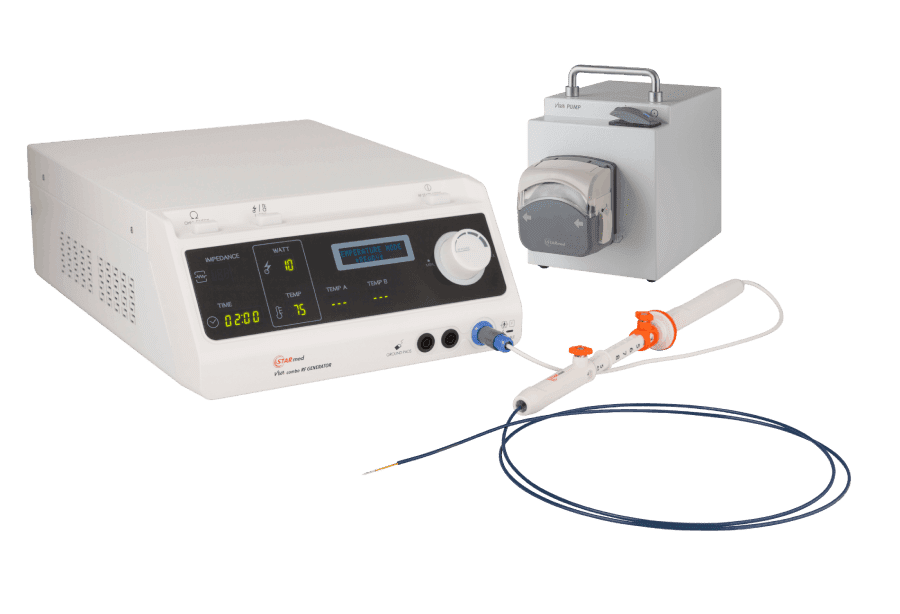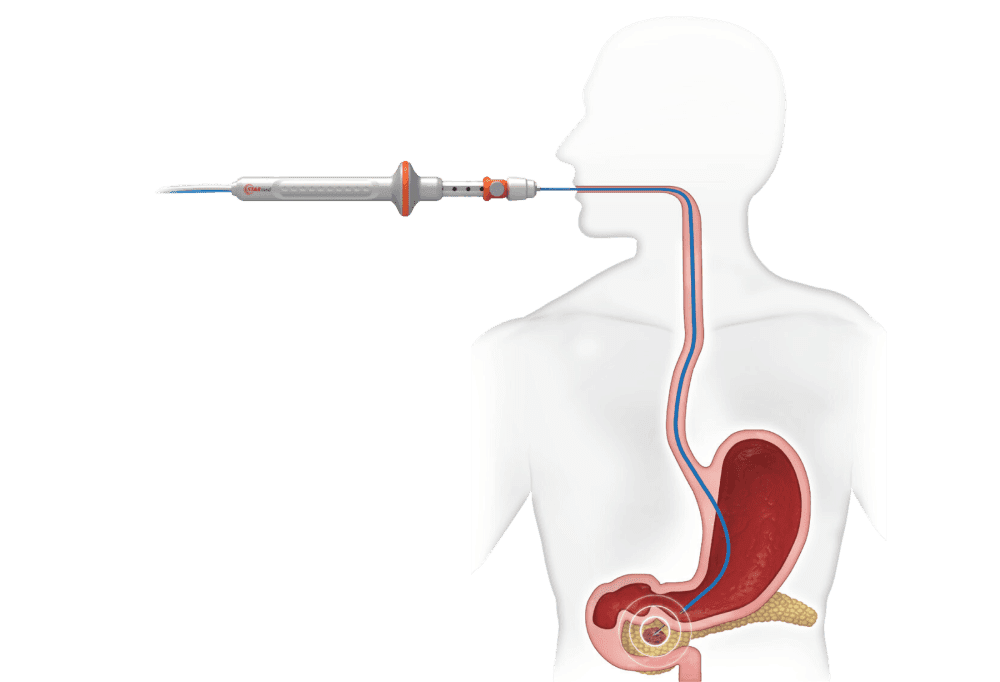An effective, minimally invasive alternative for pancreatic and extra-pancreatic tumors
With the evolution of endoscopic RFA therapies, STARmed introduced EUSRATM – an advanced technique of Endoscopic Ultrasound (EUS)-Guided Radiofrequency Ablation. This innovative approach utilizes EUS to precisely target and ablate locally advanced lesions.
STARmed EUS RFA provides a safe and feasible alternative for managing borderline resectable and unresectable pancreatic cancers, neuroendocrine tumors, cystic neoplasms, and lesions in other systems.
EUSRA technology for EUS-guided RF ablation shortens the length of RFA treatments by reducing the steps and streamlining the procedure. Achieve ultimate control for the safest and most focused ablation. The result is an efficient, minimally invasive outpatient procedure that increases patient comfort, improving the lives of non-surgical candidates.
5-year survival rate for pancreatic cancer but varies based on the stage of cancer at diagnosis.
Endoscopic radiofrequency ablation (EUS RFA) is a recent, emerging, non-surgical technique for patients who are not candidates for surgery. The FDA has cleared this minimally invasive procedure for the treatment of pancreatic cancer, including tumors that are unresectable at the time of discovery. That accounts for up to 95% of lesions, making EUS RFA a valuable therapeutic intervention in the treatment of the disease.
EUSRA technology for EUS-guided RF ablation induces coagulative necrosis using heat application to targeted pancreatic structures. Tumor antigens are released, which may trigger the abscopal effect. There is minimal or no damage to the surrounding tissue.
The result of treatment is frequently a reduction in tumor size without the need for invasive surgeries or extensive healing time. The procedure is associated with clinical remission in the majority of clinical studies.
The real-time EUS-guided RF ablation with Doppler enhances visualization of the targeted anatomical structures. This ensures minimal passage through normal pancreatic tissue. Plus, it avoids critical structures like major vessels and the pancreatic duct.


Physicians around the world have been exploring diverse applications of the EUSRATM electrode. Beyond pancreatic treatments, it has also shown efficacy in treating extra-pancreatic tumors, such as hepatocellular carcinoma (HCC), adrenal tumors, the celiac plexus, and gastrointestinal stromal tumors.
Intended Use
The VIVA combo RF System is intended for use in percutaneous and intraoperative coagulation and ablation of tissue.
Star/VIVA RF Electrode is intended for use in percutaneous and intraoperative coagulation and ablation of tissue.
The ELRA Electrode is a radiofrequency (RF) catheter which provides bipolar energy to perform partial or complete ablation of tissue in the pancreatic and biliary tracts.
Quick links
Copyright © 2025 STARmed America. All Rights Reserved. Product names are trademarks or registered trademarks of STARmed America or their respective owners.